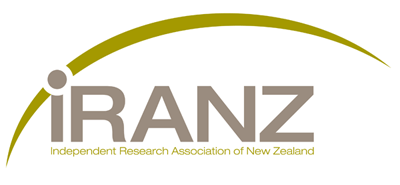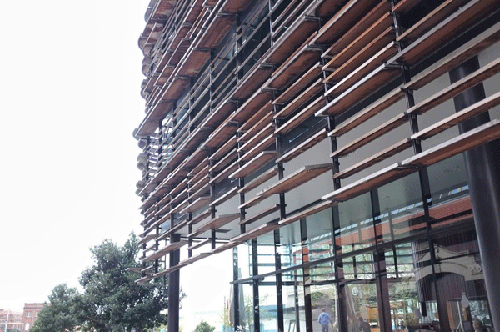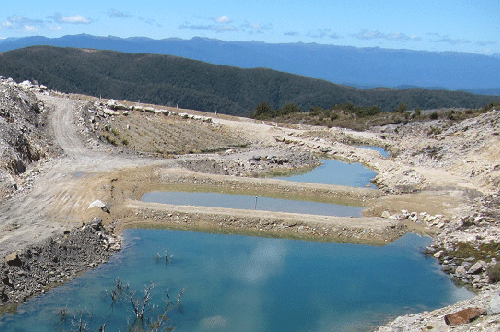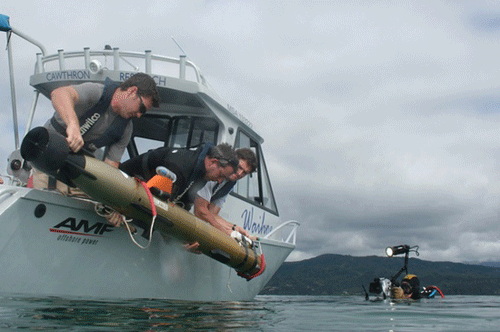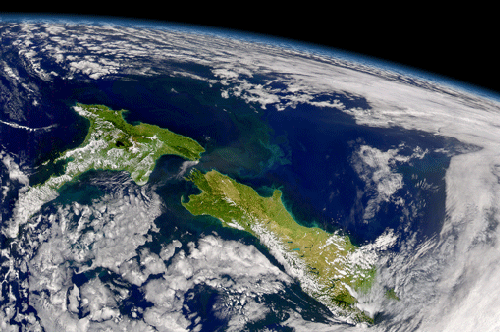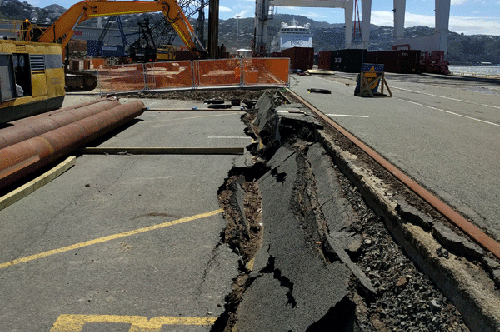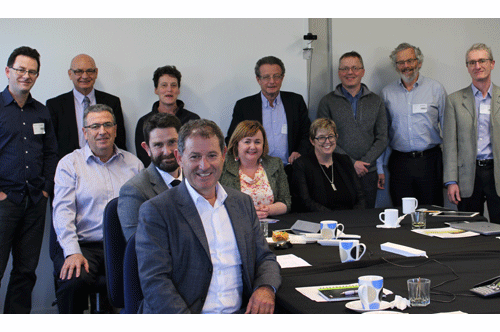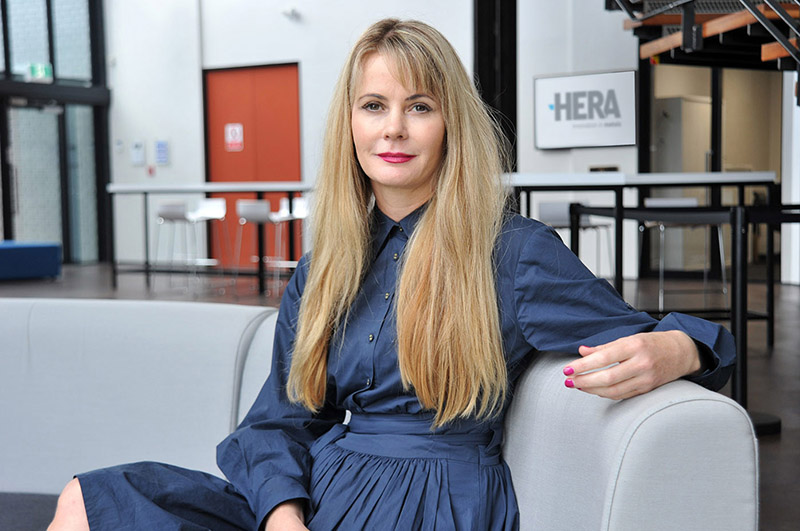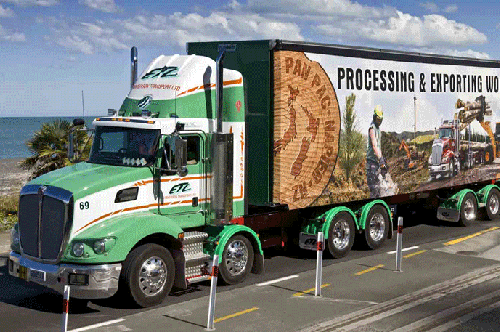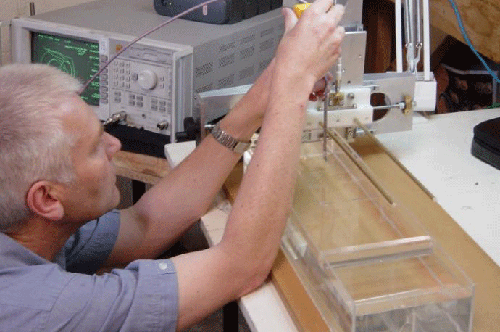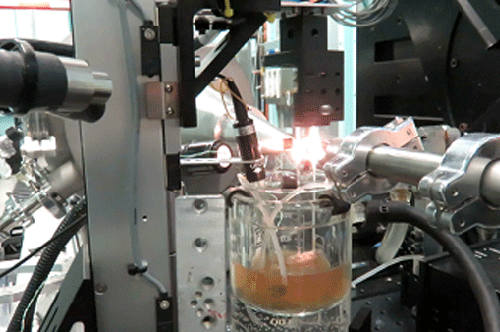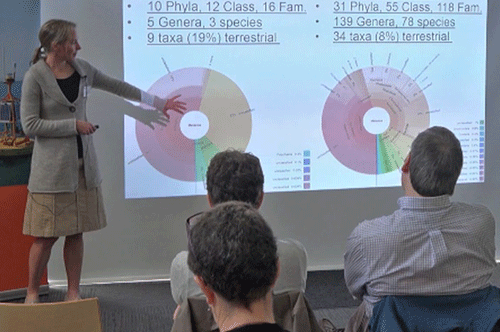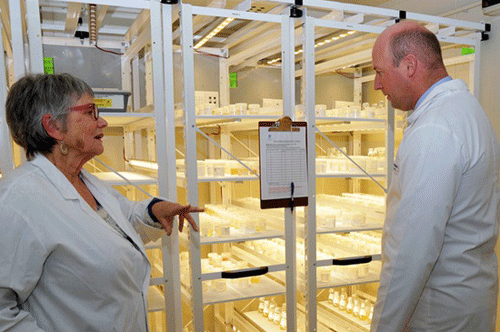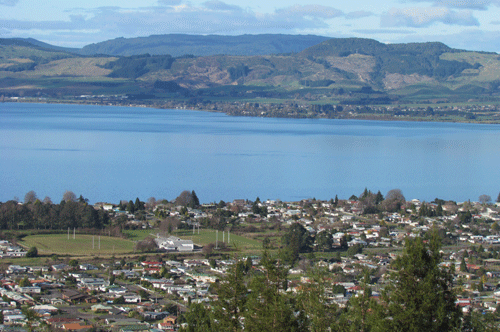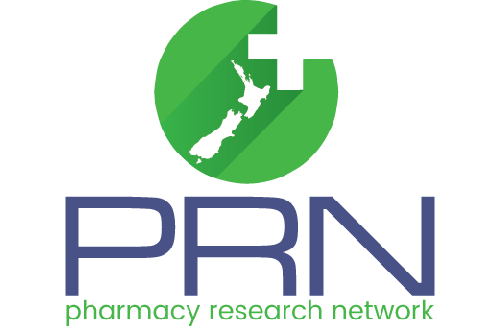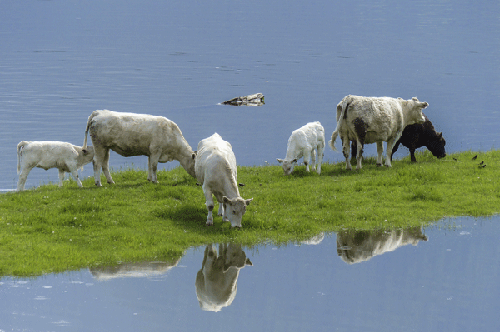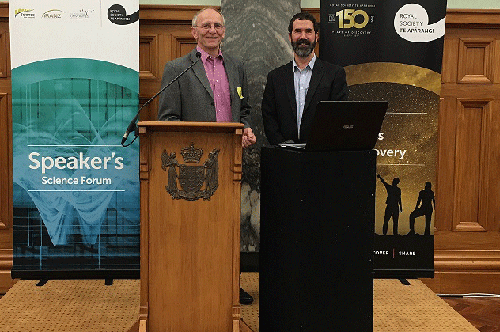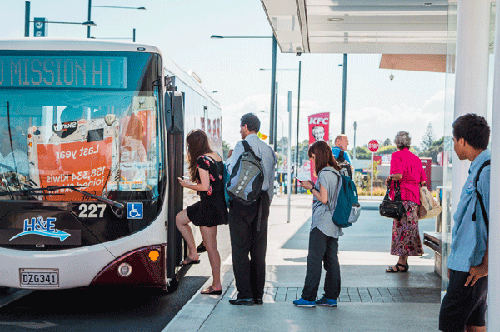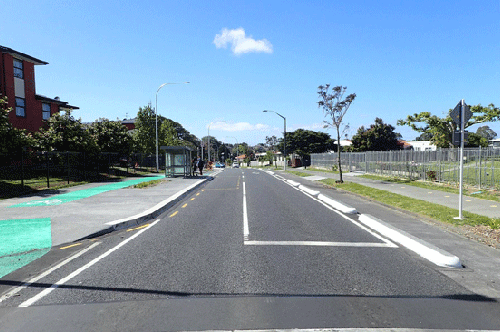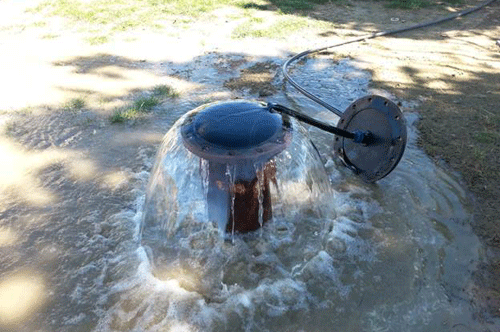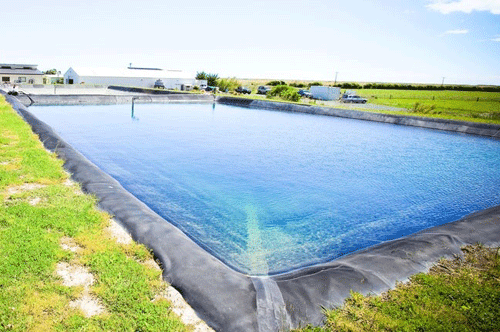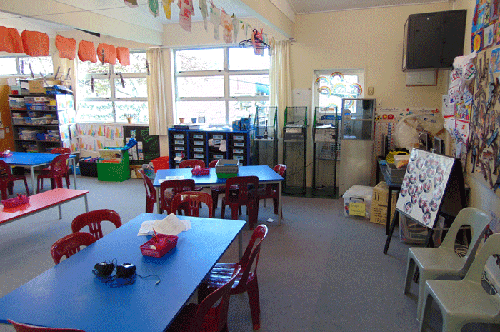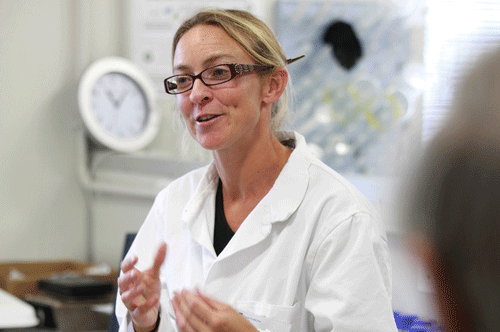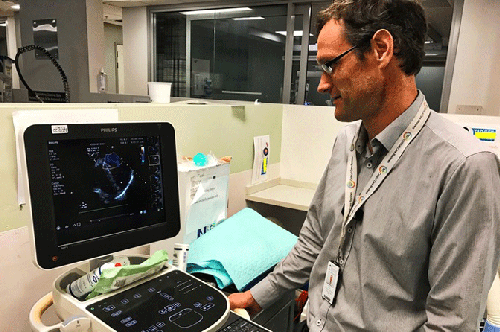News 2017
Archives: 2024 | 2023 | 2022 | 2021 | 2020 | 2019 | 2018 | 2017
News Archives 2017
Building Better Homes, Towns & Cities
December 2017: The BBHTC National Science Challenge is a collaboration hosted by BRANZ and involving researchers from more than 20 research organisations and companies. It brings together a team that includes expertise in design, architecture, construction, planning, geography, behavioural sciences, economics and technology. Research is structured around six themes or strategic research areas (SRAs). One of these SRAs is Transforming the Building Industry - a research collaboration between the University of Auckland, Auckland University of Technology, Victoria University of
Mussel shells cleaning up mine sites capture international interest
December 2017: CRL Energy and O’Kane Consultants researchers are gaining an international reputation for innovation in mine site environmental management, with collaboration or uptake of their processes now in the
New videos explain emissions trading
December 2017: New Zealand’s 2017 election renewed debate about how emissions trading can support New Zealand’s transition to a successful low-emission economy. To help explain how the New Zealand Emissions Trading Scheme (NZ ETS) works, Motu Economic and Public Policy Research is releasing seven short videos answering questions asked by students relating to climate change and the NZ ETS.
Precision Farming Technology for Aquaculture project
December 2017: Scientists are set to research the application of transformational tech for the aquaculture industry, following funding approval for a two-year Precision Farming Technology for Aquaculture project. "The aquaculture industry aims to reach $1 billion in sales by 2025. Technology that promotes sustainability, efficiency, and the ability to farm further offshore will play a significant role in achieving this target," says project leader Dr Cornelisen, Cawthron Institute Coastal and Freshwater Group Manager.
First grads awarded MRINZ MD degree
December 2017: Providing a base for specialist training in medical research is a key priority of the MRINZ. In 2012, the New Zealand Qualifications Authority registered the MRINZ as a private training establishment, and in 2013 the Institute was accredited to award the Medical Doctorate (MD) research degree. On 2 November 2017, the MRINZ had its inaugural MD graduation ceremony, in which three graduands were awarded an MD Degree.
IRANZ welcomes Centre for Space Science Technology
December 2017: IRANZ is pleased to welcome the Centre for Space Science Technology (CSST) as a member. CSST is the first of the new Regional Research Institutes to get off the ground. Based in Alexandra, the Centre for Space Science Technology (CSST) was established in June this year. They plan to build an agile company that can handle the entire Earth observation data life-cycle, from system design, data capture, data management, dissemination, through to training and support. CSST is owned by the Space Science Technology Trust and governed by an independent Board of Directors.
Monitoring NZ's road bridges and ports
December 2017: Since 2014, Opus Research has been developing a remote infrastructure monitoring system for the purpose of monitoring the structural integrity of assets anywhere. Initially, we were interested in aging, reinforced-concrete bridges that were past their design lifespans and were carrying traffic volumes and loads far in excess of what they were originally designed for. Monitoring would provide actual data on how a bridge responded to dynamic loading from maximum-weight trucks that could be fed into Finite Element Models which the engineers use in decision-making about bridge structural performance.
IRANZ welcomes new minister
December 2017: IRANZ welcomes the Hon Dr Megan Woods as the new Minister for Research, Science and Innovation. In August, Dr Woods met with IRANZ members at a meeting held at Lincoln Agritech Ltd, where she foreshadowed R&D Tax Credits. A plan which she saw as likely to engender cultural shifts towards R&D in businesses and that would get a good uptake with SMEs.
Changing of the guard at HERA
December 2017: IRANZ welcomes Dr Troy Coyle as the new CEO of New Zealand’s Heavy Engineering Research Association(HERA), and says farewell to Dr Wolfgang Scholz who is retiring.
Best practice for moving freight around NZ
December 2017: Two related OECD-ITF (International Transport Forum) Working Groups are currently keeping Dr John de Pont of TERNZ busy. John is a corresponding member of the Working Group on Intelligent Transport System (ITS) Applications for Heavy Goods Vehicles. This working group, which was initiated in February 2016, is reviewing the potential role of larger and heavier vehicles for coping with the projected growth in freight demand and how the impacts of these vehicles can be managed through ITSs. John says their focus is on tools for monitoring, ensuring compliance, improving safety and minimising the impact on the infrastructure.
IRO scientists recognised at RSNZ awards
October 2017: Two scientists from Independent Research Organisations (IROs), Professor Charles Eason from the Cawthron Institute and Professor Ian Woodhead from Lincoln Agritech, were medal recipients at this year’s New Zealand Research Honours, hosted by the Royal Society Te Aparangi and held at the Viaduct Events Centre in Auckland in October.
IROs garner Endeavour funding for leading research
October 2017: A number of Independent Research Organisations (IROs), offering research from the impact of household products on New Zealand’s aquatic ecosystems to developing nitrogen-fixing trees and grasses for our forestry and pastoral industries, have come out as winners in the recent Ministry of Business, Innovation and Employment (MBIE) 2017 Endeavour Round, with their proposals seen as world-leading science.
Two of Cawthron Institute’s research programmes were awarded funding of more than $20 million over five years. Two Lincoln Agritech research programmes will receive $8.2 million, and The New Zealand Winegrowers Research Centre based in Marlborough, has been awarded $9.3 million.
Photo: Louise Thomas
Seeing into Pounamu
August 2017:
Photo: Louise Thomas
Understanding leather tanning
August 2017: Our knowledge of leather tanning is currently flawed according to LASRA scientist Dr Sujay Prabakar. Dr Prabaker has been researching the tanning process in leather. In a first-of-its-kind in-situ experiment, Dr Prabakar used the Australian Synchrotron to measure the effect of tanning on the structure of leather in real time to improve our understanding of how chrome and other tanning agents interact with the leather’s collagen network during processing.
New Zealand’s marine biosecurity
August 2017: A new technology with the ability to revolutionise the detection of invasive marine pests in New Zealand waters is now being trialled at 14 laboratories around the world.
The global experiment follows an international workshop attended by 30 experts from 16 research organisations, keen to work out how to apply the technology which will speed up identifying invasive marine species.
Research to reduce rural nitrate discharge
August 2017: Lincoln Agritech and AquaLinc Research are currently working with ESR on a three year science project in the Hauraki Plains. The project, as part of the larger “Enhanced Mitigation of Nitrate in Groundwater” programme, is investigating using a woodchip denitrifying bioreactor to reduce nitrate loads from pastoral lands.
Queen's Birthday honours and an MPI Award for Cawthron's Dr Lesley Rhodes
August 2017: It's been a year of accolades for Cawthron Senior Scientist Dr Lesley Rhodes. Dr Rhodes received a Companion of the New Zealand Order of Merit (CNZM) for services to science and marine farming in the Queen's Birthday honours in June, followed by the inaugural Ministry for Primary Industries (MPI) Award for Significant Contribution to Food Safety in July.
New Water Allocation Management Framework
August 2017: New Zealand has abundant freshwater, on an average annual basis. However, water demand has grown, in many areas, to the point where shortages occur because the spatial and temporal patterns of supply do not match demand patterns.
Aqualinc Research is developing a new framework for sustainable water allocation management that combines statutory planning with market-based mechanisms. The core paradigm shift is moving from effects-based management of an unlimited resource to value-based management of a capacity constrained resource.
Photo: Louise Thomas
Pharmacy Research Network set to roll out
July 2017: Following the successful recruitment of patients through a pharmacy network for a Medical Research Institute of New Zealand (MRINZ) cold-sore study, the institute is now set to formally launch its Pharmacy Research Network (PRN) towards the end of the year.
Recognising the need for cost effective, but robust randomised controlled trials in the New Zealand biotech sector, MRINZ has spent the last two years evolving its novel methodology within a 950-person study of cold sores in collaboration with the Bay of Plenty’s Honeylab.
Impacts and implications of climate change
July 2017: This year’s bill for climate-related disasters in
Rebuilding better neighbourhoods
July 2017: As part of the National Science Challenge spearheaded by BRANZ, Building Better Homes, Towns and Cities, several IRANZ members have recently published research to help make our living environments a better place.
In the wake of the devastating
Production, protection and adding value
July 2017: “Production, protection and adding value” was the theme for April’s Speaker’s Science Forum. Presenters included Lincoln Agritech’s Group Manager of Precision Agriculture, Dr Armin Werner, and Lincoln University Bio-Protection Research Centre’s Director, Prof Travis Glare.
Verified blind bolt meets industry need
July 2017: The media has been rife with stories of non-compliant steel, where it has either performed poorly or been utilised despite its inability to meet
Not surprisingly, this has become a key concern for many local structural engineers who are sourcing structural components from overseas. There is not only the safety issue in regards to the component’s performance, but also the negative association for a business if it’s found to be anything but right.
Queen’s Birthday honours for Cawthron's Dr Lesley Rhodes
June 2017: Cawthron's Dr Lesley Rhodes received a Companion of the New Zealand Order of Merit (CNZM) for services to science and marine farming in the weekend's Queen's Birthday honours.
On receiving the honour, Dr Lesley Rhodes CNZM said, "This was completely unexpected and is definitely a tribute to the Cawthron team. The research I'm involved in brings together scientists with expertise in many different fields so any successes for our 'Seafood Safety' programme are a joint effort."
Public transport and smarter mobility in our growing cities
March 2017: If we want our cities to be the best we need to make some bold choices and genuinely take into account how people want to work, live, and play - not just today, but into the future.
Active transport in growing cities
March 2017: Serious effort is needed if we are to reverse the steady decline in walking and cycling for transport in
Groundwater - a mysterious resource
March 2017: In an 1861 US court case considering the rights to groundwater use (Frazier vs Brown), the judge ruled that “the existence, origin, movement and course of such waters, and the causes which govern and direct their movements, are so secret, occult and concealed, that an attempt to administer any set of legal rules in respect to them would be involved in hopeless uncertainty, and would be, therefore, practically impossible”. However, in the years since, we have developed ways of understanding this mysterious resource, such that, though uncertainties remain, we can predict cause and effect with much greater confidence.
Aquaculture park world class
Productivity in NZ’s urban areas
March 2017: Are firms in large cities more productive? And if they are, what is the productivity premium of our largest city,
Air pollution in schools
March 2017: Exposure to indoor air pollution can have significant negative short-term and long-term health effects. Children are more sensitive to the negative health effects of air pollution. They breathe more rapidly than adults and do not have fully developed respiratory systems. Around one-quarter will suffer from asthma, in addition, there is also growing evidence that air pollution is associated with slower cognitive development and behavioural problems in children. For these reasons, air pollution in classrooms is of great concern.
Geothermal projects full steam ahead
March 2017: Developing a geothermal spa and bathing facility in Rotorua and aiding Top Energy at Ngawha Springs to make better use of their brine discharge are two exciting geothermal projects that Heavy Engineering Research Association (HERA) engineers and various HERA member organisations are currently involved in.
Construction on the spa project is expected to begin later this year and the HERA team have been busy assessing the geothermal heat resources and preparing models of heating network arrangements and heat resource application potentials.
Photo: Louise Thomas
From medicine to marine science and back again
March 2017: A chance meeting many years ago with a
CSST closer to launch
March 2017: The Centre for Space Science Technology (CSST) will soon be braving the final frontier with a newly signed contract with MBIE, following the funding announcement for the $14.7 million project in November last year. CSST plans to establish an international satellite data exchange to provide space-based measurements and satellite imagery to meet the needs of New Zealand's regional industries. They also plan to manage partnerships to design, build, launch and operate CubeSats (small low cost satellites) that will provide imagery.
Improving survival for the critically ill
February 2017: Every day, millions of patients around the world are given intravenous saline, it was of concern then when some data suggested that saline solutions, compared to a more expensive Plasma Lyte alternative, may increase the risk of patients developing kidney failure. However, new research in response to the data has shown that this is not the case.
